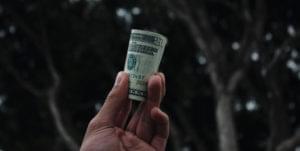Now that you’ve developed your amazing and ground-breaking app, it’s time to make a return on the sizeable investment of resources expended during the design and development.
App monetization can be tricky. You want to achieve the highest number of downloads possible, so keep the barrier to entry low by offering your app for free. Or you have to make up for the lack of download revenue with ads, subscriptions or another monetization option. These can all annoy your users if implemented without care.
By providing alternative monetization options, you have a better chance of making sales and receiving a high amount of downloads. Aside from traditional advertising and alternative app stores to sell your app, the following models have been successful at driving revenue without ads.
Offer a Premium Subscription Service
49 percent of app users are willing to spend cash for a subscription. The majority of users who have paid for an app in the past spent $9.99 or less. The categories of apps that users are most likely to subscribe to are for movies, television, music, games, news, and magazines.
The subscription model has been successful for some, because it also drives usage. People will use services that they pay for.
A hook is often employed to further engage users. You might give users who sign up for many months at a time a sizeable discount or VIP status. Lots of successful apps take varying usage into account, establishing different tiers in their pricing model. For example, $5.99 a month might get the user free in-app downloads, but $9.99 gives them free in-app downloads as well as extra features.
Provide a Paid, Ad-Free Experience
Ad free options give your users options. Hulu, Pandora and Spotify allow users to pay the premium fee and enjoy ad-free entertainment. Hulu offers a lower tier for ad supported subscriptions. Pandora and Spotify have free tiers that incur limitations in features. Your app might benefit from a free, middle-price and ultimate experience as well, especially if it’s within the entertainment realm.
Supply in-App Downloads
Giving away an app for free but charging for extras makes use of the popular freemium model. A good example of this is Hay Day, which anyone can download and play for a basic experience. After users have installed the game on their phones and are addicted, they can pay to get premium in-game items and stars to speed their progress. In-app downloads are a spin-off of the age old ‘upsell’ sales technique. You’re upselling your user base once they’re already fans of your game.
In-app downloads could sell consumables or non consumables. For the former, users pay for features that they can use once, like currency within the app. The latter gives users the opportunity to buy goods that will last forever, like levels or premium app functionality.
For this monetization type, you can create a one-time charge option for the user or create a subscription service. Within the subscription element, make sure that customers are receiving new features to try out along the way so they are always enjoying and using the upgraded version of your app.
Revenue as Part of User Experience
The monetization options I have covered need some planning to use effectively, but when implemented well can complement application design instead of obstruct it.
I’d love to hear your thoughts and comments on apps that have tried these models well and your experiences trying them.
 Robyn Tippin
Robyn TippinRobyn Tippins is the Co-Founder of Mariposa Interactive. Robyn has been managing online communities for over 20 years, starting at AOL in the mid-90s. A front-end designer, community manager, digital marketer and history buff, Robyn is fascinated by human behavior.




